Horsey Chapel. First published in the Proceedings of the Somerset Archaeological and Natural History Society for the year 1906, volume 52. Note that the text has been slightly edited for aid of clarity. Additional notes can be found at the bottom of the page.
HORSEY was an ancient village situate about a mile from Bridgwater. At the time of the Norman Conquest one Rademer held it from Walter, the lord of Bridgwater. Domesday states that it was gelded (taxed) in King Edward the Confessor’s time to the value of two hides (a measurement of land, approximately 240 acres). Domesday tells us there was arable land extending to seven carucates (another measurement, roughly the same as a hide); demesne (private land reserved for the lord of the manor), extending to two carucates. Living in the settlement were two servants of the lord, eight villanes (peasants personally bound to his lord, to whom he paid dues and services in return for land), six bordars (similar, but with smaller plots of land), three cottages (tenants holding a cottage and a very small amount of land), five plough teams, twenty-four acres of pasture—value, four pounds.
It was the seat of the Horsey family, who, in the time of Henry II, were lords of the manor. The estate, with the adjoining manor of Horsey Pignes, ultimately passed into the possession of Sir John Stawel. This latter manor had a church, which by tradition is believed to have been the mother church to Chilton Trinity. This is very possible. The course of the river Parret has greatly changed during the last five hundred years, and part Chilton parish now lies on the Horsey side of the river.
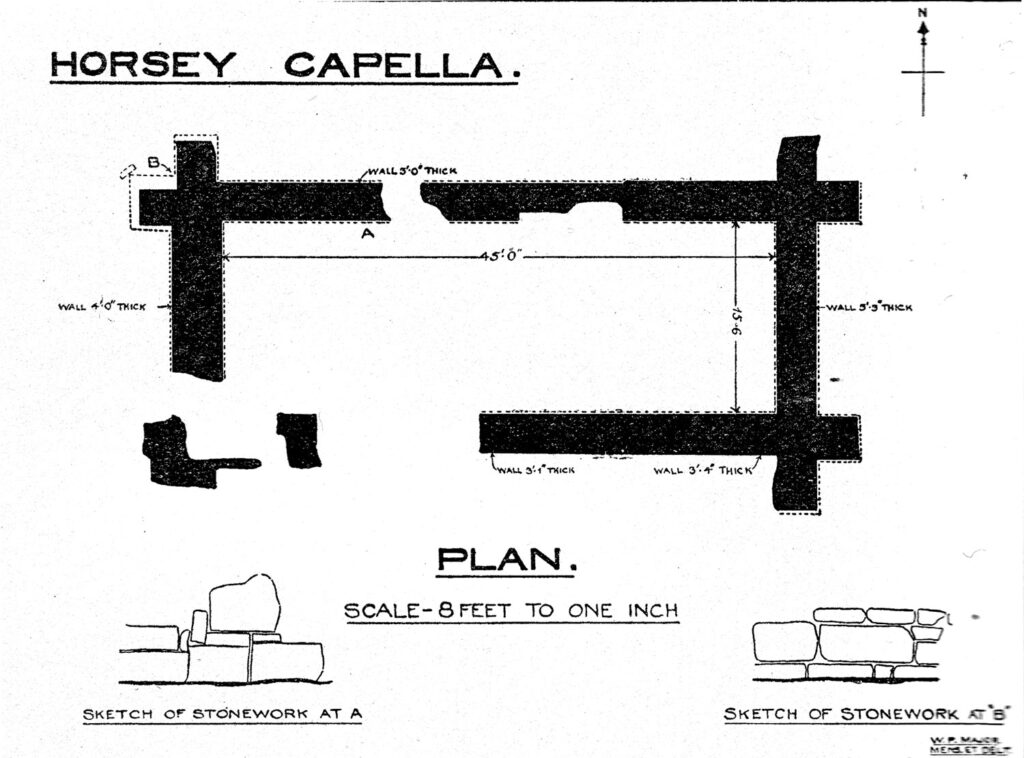
The remains of Horsey chapel are about one hundred yard-west of the existing Horsey manor house, near to the Bath road. It was served by the vicars of Bridgwater, who are described in the documents as holding the vicarage cum Horsey Capella. The field in which the remains of the chapel were found is known as Chapel Cleeve, and is full of foundations of old buildings which once constituted the village of Horsey. The foundations are rather shallow, and they are laid on the clay about three feet below the present surface of the ground. Everything points to the building having been of thirteenth century date. The chapel has been a ruin for several centuries, and is described in later documents as Horsey destructa. It is not located in Paschall’s map of 1686, although Bradney Chapel (now destroyed) is marked. Some tiles were found (with a green glaze, and evidently not of local make) in the foundations. The actual excavation work was admirably done by my friend the Rev. W. M. K. Warren, who was assisted by some helpers. No trace of the chapel is visible above the surface of the ground.
ARTHUR H. POWELL, LL.D.
Additional Notes
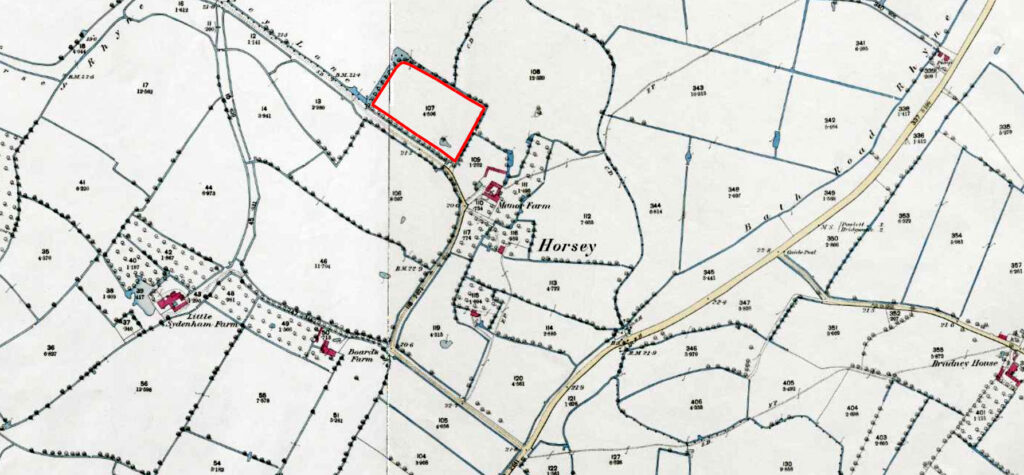
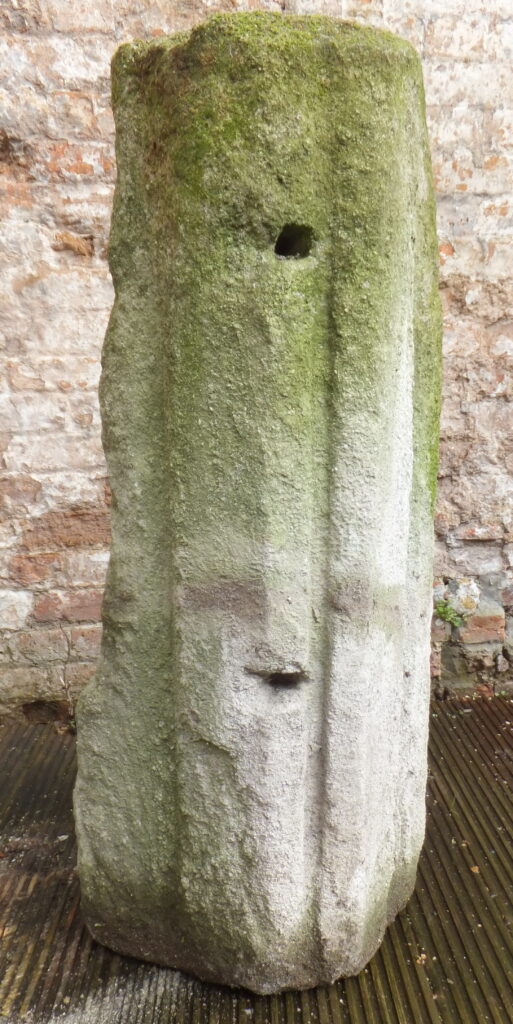
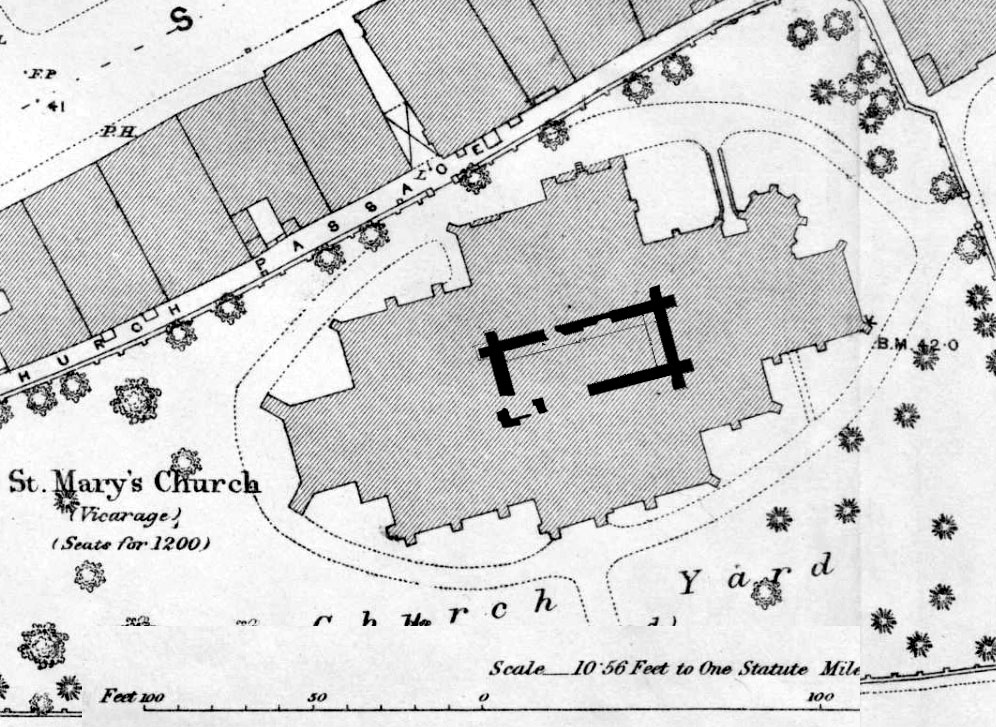
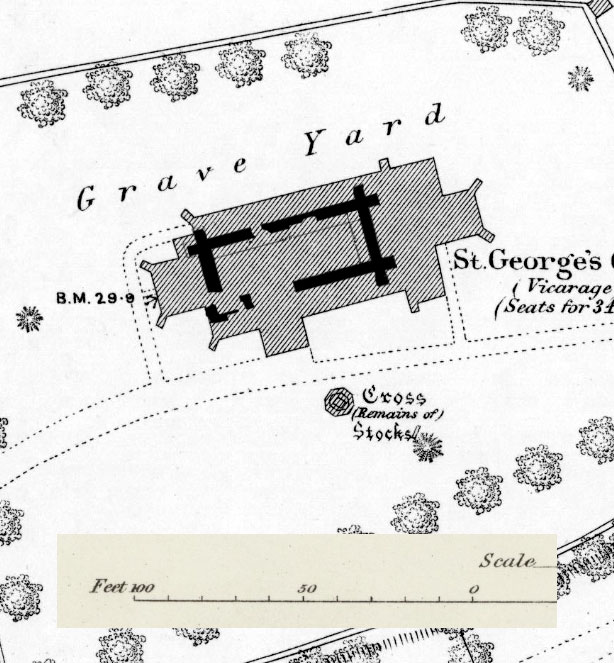
The Court Roll for the Manor of Horsey, Bridgwater 1562-1563 [D/SHC: 1154] records that “All the tenants of Horsey are ordered to repair the chapel roof and tiles before the feast of St. James next on pain of 20s”. (Note kindly supplied by Alan Hudson).
Links
For a fuller exploration of Horsey at the time of Domesday, see here.
A fuller history of the manor of Horsey can be read here.
More on the brief history of the chapel can be read here.
